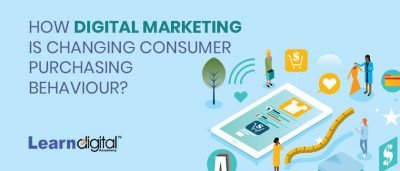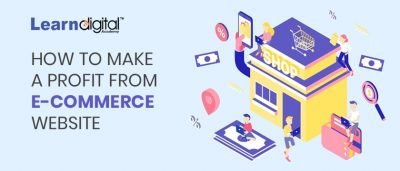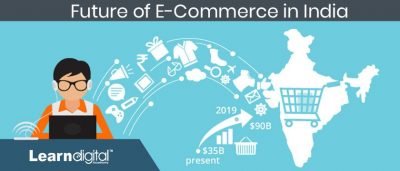
What is Consumer Behavior?
Consumer behavior is the study of consumers and the processes they use to choose, use (consume), and dispose of products and services, including consumer’s emotional, mental, and behavioral responses. Consumer behavior helps marketers decide how to present their products in a way that generates a maximum impact on consumers. Understanding consumer buying behavior is the key secret to reaching and engaging your clients, and convert them to purchase from you.
Technology makes people’s lives easier and busier by giving our time and attention to our devices. In the year 1979 online shopping method began by Michael Aldrich. Digital Marketing has both pros and cons so it depends on how you use internet. Many people in this world love shopping so many people go on the weekends before internet has made things easier to shop online. Offline shopping and purchasing behavior helps us build personal connections with one’s business.
Some customers may prefer to buy only after touching or trying the product, which may help us know what’s the fabric if there’s any damage we can go for the next. In recent years the online shopping industry has grown vastly as many consumers don’t have enough time due to their busy schedules with their work that they can’t go out so many purchases take place online and people are getting lazier to walk out to the stores, reasons can be like it’s very hot or pollution and saves time.
Recommended reading: Ecommerce Marketing Training Bangalore
One reason many consumers buy online because they get the products cheaper than the stores. Even to buy groceries people don’t travel to the stores but purchase online as they deliver in 60-90 mins, 1-day delivery, prime delivery options, return policies, and many more on apps like big basket, grofers, Amazon, Flipkart, Myntra, etc.
The brick and Motor business model is getting replaced with Click and Order shopping getting information is very easy with help of internet. Traditional marketing has failed to identify people’s emotions that’s why it’s failing. I will tell you about how consumer behavior can be explained in 4 dimensions like physical, psychological, social, and cultural characteristics in purchasing decisions.
A. Physical Characteristics:
of a person is an important factor affecting purchase decisions. Personal factors like age, gender, occupation, education, lifestyle, and income status. Both men and women are familiar with using internet. Individuals with lower income think before buying anything online as they find this platform risky but not the same with higher income groups. Its found that educated people are using the internet more online shopping is considered an easy activity and they accept innovations that have an effect on purchasing decisions.
B. Psychological Characteristics:
of a person can help question themselves like which is a better place to shop, should they look for a better price or should they shop online, etc motivating them for better options. Motivation is important to make choices to buy online. Perception is one of the important factors which helps in examining the quality of the product. The personality factors help consumers what sites they should visit and where they should shop. Attitudes of a person change daily and easily in which marketers get more interested. Emotions and feelings play an important role in choices/ decisions while purchasing. The unconscious mind influences our choices.
C. Social Characteristics:
The social influence comes from reference groups i.e., virtual communities consisting of discussion groups on a website. Other people’s opinions, experiences affect consumers. Contact links, family references also play an important role in an individual’s attitude.
D. Cultural Characteristics:
Different social classes create different behaviors. Almost everything we do, we give and receive information, make decisions, lead and manage, is influenced by culture.
Consumer attitudes towards online shopping usually determined by factors like trust and perceived benefits. Trust refers to the confidence of a consumer to adopt online shopping and his or her belief that the online stores will provide reasonable prices, the right product or service information, keep consumers privacy, manage credit card transaction information securely. For all these consumers should have trust in your website as they cannot see each other physically. Perceived ease of use and usefulness means the consumers understanding that its easier to communicate with online retailers through their websites and makes it easy to shop online and perceived usefulness perceives internet as a useful tool for online shopping. Between social media and customer forums, consumers have the ability to build or destroy brands if they don’t feel the services they got are good enough.
A. Consumers have become researchers:
Consumers research every day on various brands and products and compare the better and convenient. Their purchase decision is highly influenced by interactions they have with the brand and other influencers online.
B. Consumers are not afraid to experiment:
Consumers were very skeptical to change brands earlier called brand loyalists but things changed with time as they look for better features than before.
C. Consumers have a lower tolerance level:
Consumers these days are not okay to settle or compromise in any manner. They expect an immediate response to their grievances or queries if any. Many times negative reviews can make or break the brands.
D. Word of Mouth:
is done in terms of reviews of experts and users, rating, testimonials, etc. in digital marketing.
Stages consumers go through when they make a purchase:-
A. Need Recognition:
means to identify one’s needs and wants to make a purchase. Perceiving a problem plays an important role or else it’s difficult to identify what a consumer needs. Eggs:- If we buy a cosmetic one will go what to use for their skin type if its matching or not and will see if its safe for their skin type like sensitive, normal, and all skin types. A need can be triggered by internal or external stimuli like hunger, thirst or word of mouth, advertising, and so on. Its also found in Maslow’s hierarchy of needs.
B. Information Search:
helps in recognizing a specific problem or need and research for information to solve the issues. Internal research is by recollecting a product through personal experience. External research is by word of mouth, friends, family, etc.
C. Evaluating alternatives:
also known as consideration set where consumers spend time in comparing prices, warranties, terms, and conditions, etc.
D. Purchase:
A decision when a consumer buys something that’s when all the above things are identified and decision to purchase is made.
Stages of Purchase:-
i. Pre- Purchase Stage:- It helps customers compare different options.
ii. Purchase Stage:– Details like product assortment, sale services, and information quality seem to be important for consumers what product they should select, or what seller they should buy from.
iii. Post- Purchase Behavior:- refers to a stage after buying purchasing something online. Some might want to return the product, exchange due to damage or not fitting, etc.
Factors of Online Consumer Behavior:-
a. Internal factors like personality traits or behaviors of a person like attitudes, motivation, learning, and perception.
b. External Factors like demographic, socio-economic, culture, subculture, reference groups, technology, and marketing.
c. Functional Motives of a consumer include time, price, convenience of shopping online, etc.
d. Non- Functional motives relate to cultural or social values like brand of the store/product.
Consumers find a variety of brands online on the same website whereas in a physical store it’s single branded or multi-branded. Online shopping lead to less compulsive purchasing behavior and saves time.
Consumer Buying behavior has four types like:-
i. Complex buying behavior:- is encountered when one buys an expensive product and makes a decision to check with his/ her friends and family does enough research to buy or not.
ii. Dissonance reducing buying behavior:- High consumer involvement is found due to high price and infrequent purchase. He/ she buys an easily available product as he has no choice and limited decisions.
iii. Habitual Buying Behavior:- Low involvement of consumers in a purchase decision where he considers only a few brands.
iv. Variety Seeking Behavior:– Consumer involvement is low. Brand switching is more in this area due to curiosity or boredom or for a different taste.
Digital Marketing impact on consumers buying behavior:-
- Ad blockers allow consumers to avoid unwanted advertisements on various devices to make it ad-free usage. Ads should be more interactive and engaging.
- Wearables shape consumer lifestyle and save a business money.
- Smart devices offer consumer convenience and peace of mind.
- Fulfillment solutions drive seamless customer experience.
- Information centered shopping.
- Value on products and services that save time.
What affects consumer behavior?
1. Marketing campaigns:- They influence purchasing decisions of consumers a lot. If done right and regularly, with the right marketing message, it can even persuade consumers to change brands or opt for more expensive alternatives. Marketing campaigns can be used as reminders for products/services that need to be bought regularly but are not necessarily on customers top of mind like insurance. A good marketing message can influence impulse purchases.
2. Economic conditions:- For expensive products especially (like houses or cars) economic conditions play a big part. Consumers make decisions in a longer time period for expensive purchases and the buying process can be influenced by more personal factors at the same time.
3. Personal preferences:- Consumer’s behavior can also be influenced by personal factors like likes, dislikes, priorities, morals, and values. dislikes, In industries like fashion or food personal opinions, are especially powerful.
4. Group influence:- Peer pressure also influences consumer behavior. What our family members, classmates, immediate relatives, neighbors, and acquaintances think or do can play a significant role in our decisions. Social psychology impacts consumer behavior. Choosing fast food over home-cooked meals for example.
5. Purchasing Power:- Our purchasing power plays a significant role in influencing our behavior. Unless one is a billionaire budget will be into consideration before making a purchase decision. The product may be excellent, the marketing could be on point but if we don’t have the money for it we won’t buy it. Segmenting consumers based on their buying capacity will help marketers determine eligible consumers and achieve better results. Segmenting, Targeting and Positioning helps consumers to make the right purchase decisions, and it’s easier for marketers.
Conclusion:- Artificial Intelligence ( AI ) will be playing a remarkable impact in the coming years digitally to help identify consumer’s needs and assist them with queries, maintain relations, and boost lead generation. Digital marketing, therefore, is expected to meet consumer’s needs, efficiency, and maximized ROI. It is understandable that change is the only constant. Brands will get a chance to connect with target audiences deeply. Companies that put consumer needs first are sure to win as new technology is developing daily and people change for betterment. As a consumer, we look for something that satisfies all our needs in one product/service in the category we are looking for. Online buying or digital buying will create a greater impact in the later decades for consumers with varieties to choose from.
Want to pursue your career in digital marketing? Join our Digital marketing course with placement in Bangalore and learn all the skills you need to get hired as a digital marketer.







